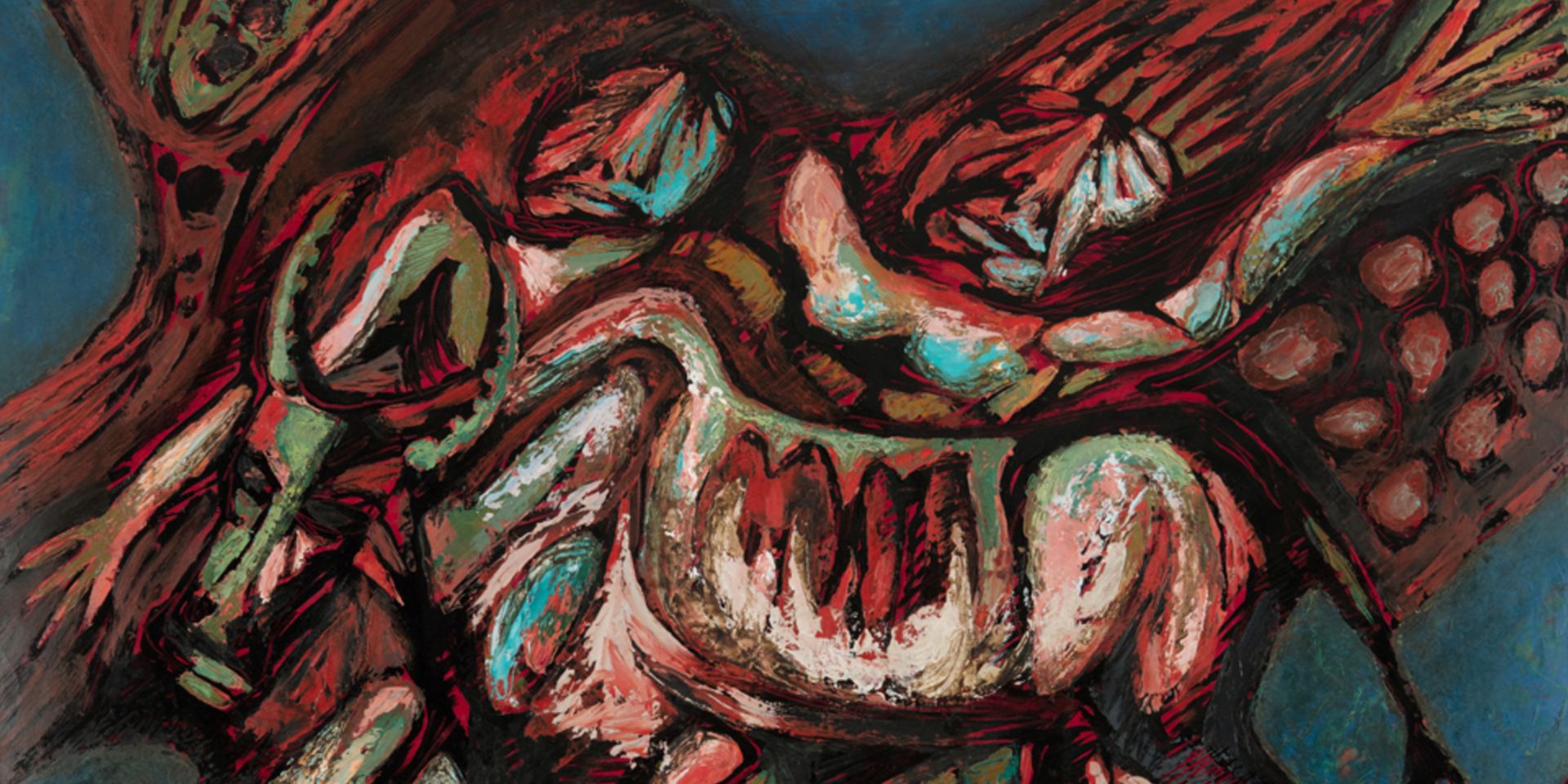Significant Forms: Celebrating the art of Jogen Chowdhury
Significant Forms: Celebrating the art of Jogen Chowdhury
Significant Forms: Celebrating the art of Jogen Chowdhury
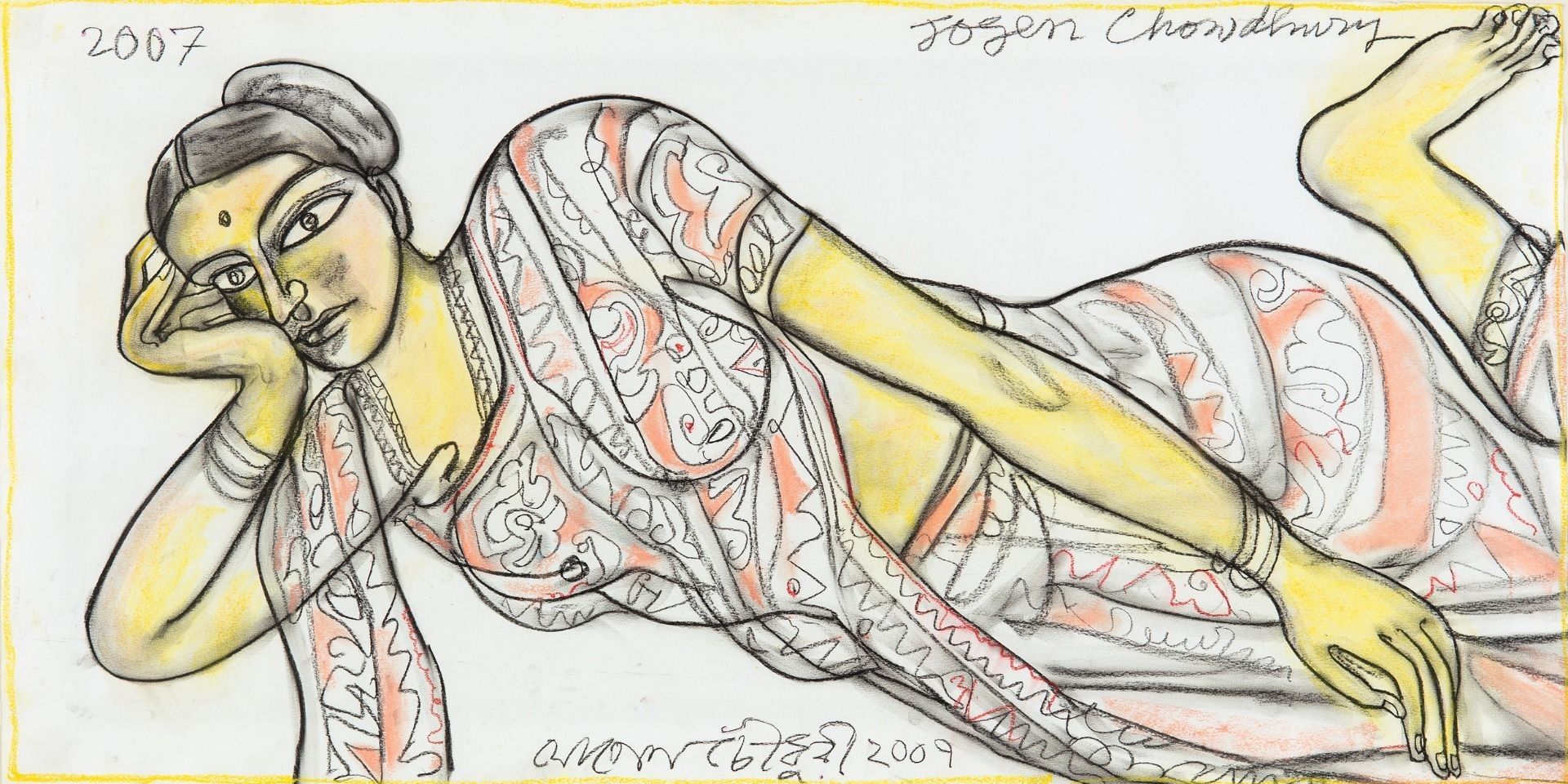
Jogen Chowdhury, Reclining Woman, 2007, Dry pastel and charcoal on paper, 49.5 x 99.6 cm. Collection: DAG
Winner of the Asia Arts Vanguard Award, Jogen Chowdhury, an eminent Indian artist, was born on February 16, 1939, in Daharpara village in Faridpur district, present-day Bangladesh.
His artistic journey has been marked by a profound engagement with human emotions and a distinctive style that fuses traditional Indian art forms with contemporary sensibilities. The artist's use of ink, watercolour, and pastels contributes to the distinctiveness of his work. His compositions are often marked by a sense of fluidity and spontaneity, capturing the nuances of human emotions with a keen sensitivity. Chowdhury's ability to convey a wide range of emotions—from joy and sensuality to melancholy and introspection—has earned him acclaim both in India and on the international stage.
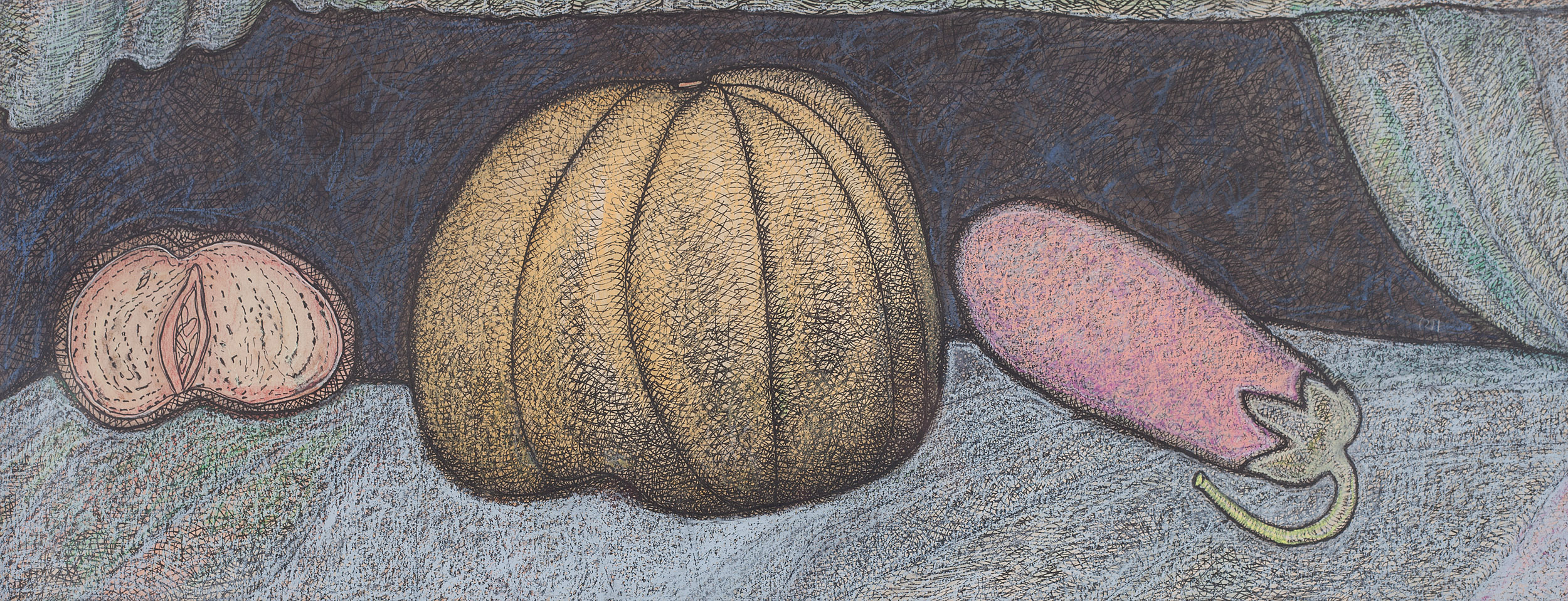
Jogen Chowdhury, Still Life with Fruits - II, 2001, Oil pastel and ink on paper, 27.2 X 71.1 cm. Collection: DAG
Chowdhury's early life was shaped by the socio-political turbulence of the Indian subcontinent during the pre- and post-Independence era. His family moved to Calcutta (now Kolkata) after the partition of India in 1947, where he later pursued his formal education in art. He graduated from the Government College of Art and Craft in Kolkata in 1960 and further honed his skills at the École Nationale Supérieure des Beaux-Arts in Paris from 1965 to 1967. Speaking to the editor of the DAG Journal, he highlighted his student days in Kolkata as a time of experimentation as well as struggle, partly due to his uncertain lodgings in a city teeming with refugees like himself. Sometimes he would accompany his classmate, artist Sunil Das, to the stables where the latter sketched horses. Illustrious seniors and teachers included the likes of Ganesh Pyne and Chintamoni Kar.
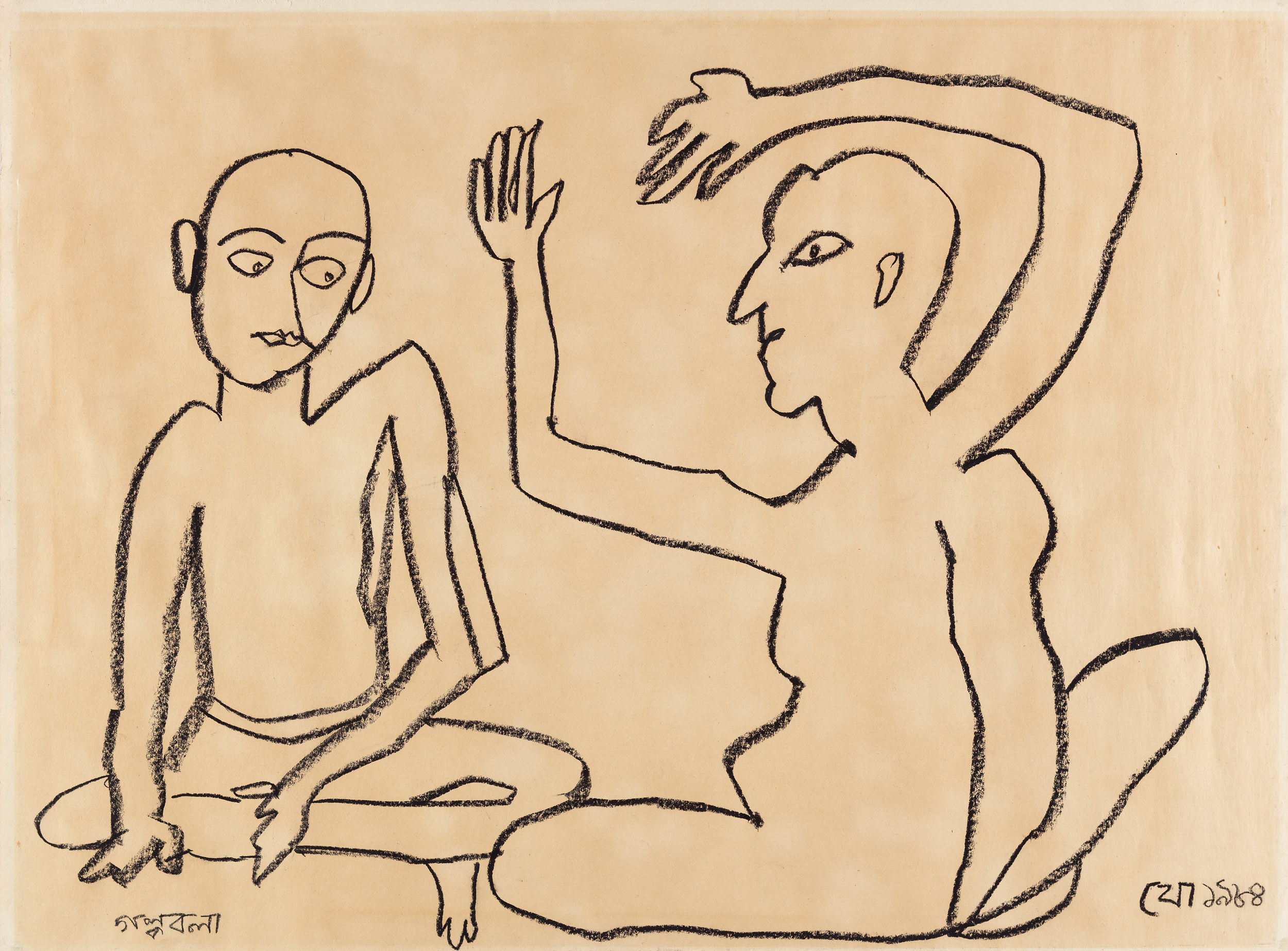
Jogen Chowdhury, Golpo Bola (Story Teller), 1984, Charcoal on paper, 56.4 X 76.2 cm. Collection: DAG
At the time, he started making some of his powerful sketches depicting the fragile living conditions of such displaced people, usually on the city’s pavements or at railway stations, such as Sealdah. Many of these had titles suggesting the hellish nature of their inhabitation, the darkness only emphasised by his use of stark black lines. The drawn line, essayed forcefully and sensually to describe human bodies and still lives, would remain a constant idiom of growth in Chowdhury’s oeuvre, becoming a hallmark of his style. Many years later, after moving to teach at Santiniketan in 1987, he would write on the essential place of sketching and drawing in his art: ‘…in the last few years I have managed to accumulate a fairly large stock of drawings in ink and brush and pastel. As I began to think of organising them, I could read a whole history of drawing behind them—right from my life studies in college and immediately after, to the sketches of refugees at Sealdah Station in the mid-1950s and my Paris drawings from the second half of the 1960s… Drawings have become for me a mode of expression—independent and unique. I am convinced that whether as an artist or as a viewer, one really starts appreciating a work of art only when one is able to appreciate it in its simplest form of expression, as a drawing; for a real work of art has to be a work of art before it can be a drawing or a painting or a sculpture or whatever else it purports to be.’
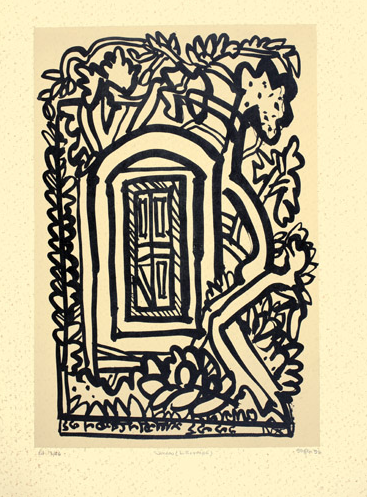
|
Jogen Chowdhury, Window (sitnography), 1992, 55.1 X 36.8 cm. Collection: DAG |
Throughout his career, Jogen Chowdhury's art has sought to reflect the human condition. His works are characterized by bold, expressive lines that create a harmonious blend of the abstract and the figurative. Explorations of the human form, particularly the female figure, has often become a central theme in his paintings and drawings. From an early inclination towards realism, as he evolved as an artist, his style underwent a transformation, incorporating modernist elements while retaining a strong connection to his cultural roots. His artistic vocabulary combines elements of folk art with a contemporary visual language, creating a synthesis that is both timeless and relevant.

Jogen Chowdhury, Untitled (Woman with Yellow Hair), 1993, Ink and pastel on paper mounted on card, 35.6 X 35.6 cm. Collection: DAG
Jogen Chowdhury's career has been punctuated by numerous accolades and exhibitions. His works have been showcased in solo and group exhibitions across the globe, including in India, Europe, and the United States. In 1986, he was awarded the prestigious Padma Bhushan, one of India's highest civilian honors, in recognition of his exceptional contribution to the field of art.
Apart from his accomplishments as an artist, Jogen Chowdhury has also played a significant role in shaping the cultural landscape of India. Early in his career, he worked for the Weaver’s Service Centre in Chennai’s handloom board, acquiring experience in working with fabric design and textiles, and for over a decade he worked as the curator of the art gallery at New Delhi’s Rashtrapati Bhavan. He also served as the Regional Secretary of Lalit Kala Akademi in Delhi and later as the Chairman of the National Gallery of Modern Art (N. G. M. A.) in New Delhi. Following his stints at Santiniketan’s Kala Bhavana and many other arts organisations in West Bengal and beyond, he also runs an arts centre in Kolkata called Gallery Charubasona. He attributes his lifelong commitment to institution-building to a desire for effecting permanent change in the landscape of patronage and support for emerging artists. It is only fitting, therefore, that he still mentors many young artists across the country and avidly collects or recommends their work to museums and galleries on a regular basis. When we asked him for a few names, he drew our attention to the work of younger artists like Mithu Sen, Arindam Chatterjee, Mahula Ghosh and Tanmoy Samanta.
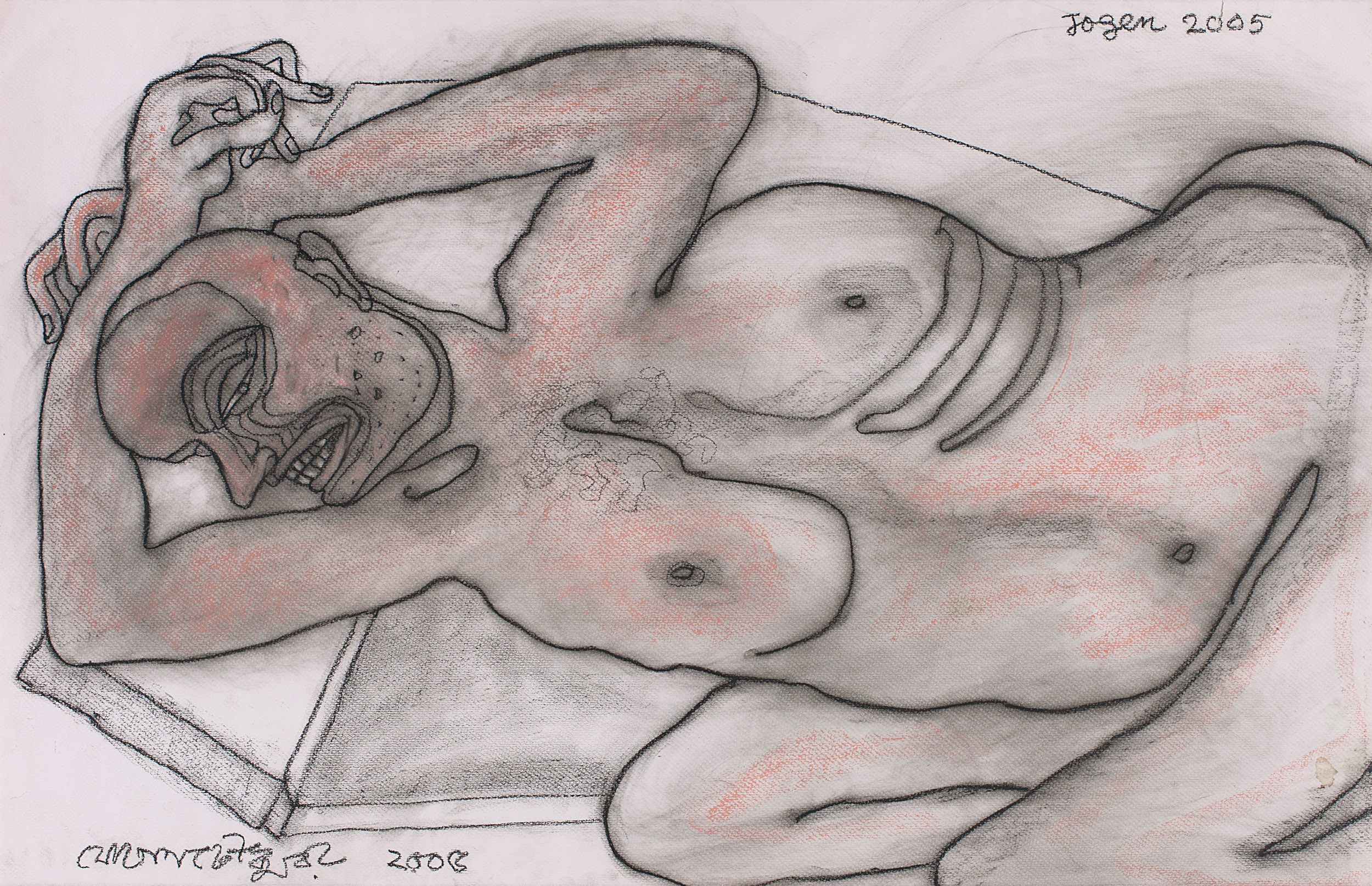
Jogen Chowdhury, Man in Distress, 2005, Charcoal and pastel on paper, 54.6 X 83.8 cm. Collection: DAG
Jogen Chowdhury’s ability to seamlessly blend tradition with modernity, coupled with a willingness to explore the darker corners of the human psyche, has left an indelible mark on the art world. His tireless championing of institutional spaces for art and craft stands almost equally in honour of achievement. Chowdhury's works continue to be celebrated for their affective resonance and timeless relevance, ensuring his place among the most revered artists of his generation.
related articles

Conversations with friends
The Making of the Dhaka Art Summit: Behind the scenes with the Curator
February 01, 2023
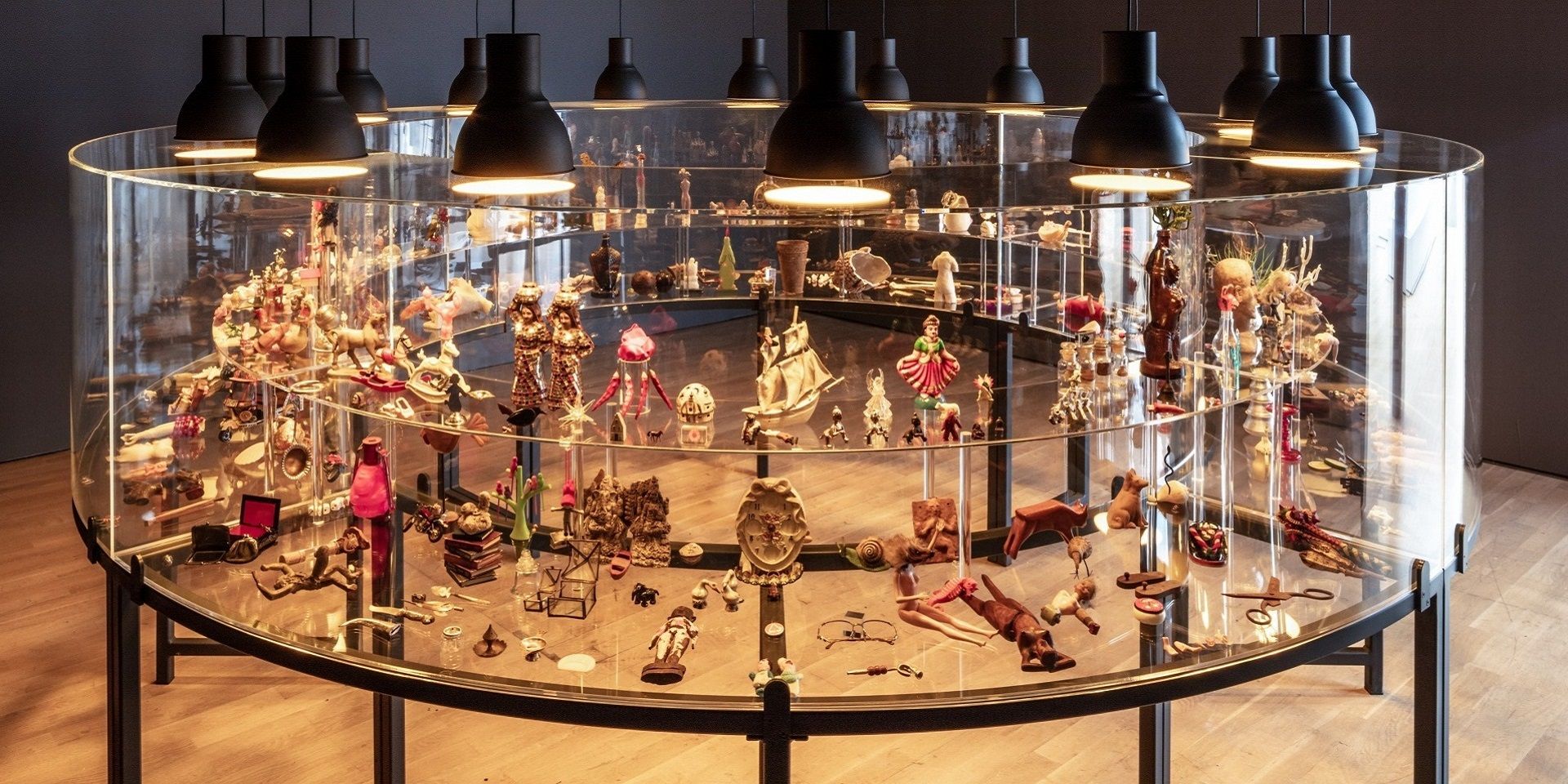
Conversations with Friends
Conscious Collecting with Asia Art Archive and Durjoy Rahman
Editorial Team
March 01, 2023

Conversations with Friends
Mysteries of Indian Art: A Conversation with Mamta Nainy
The Editorial Team
May 01, 2023
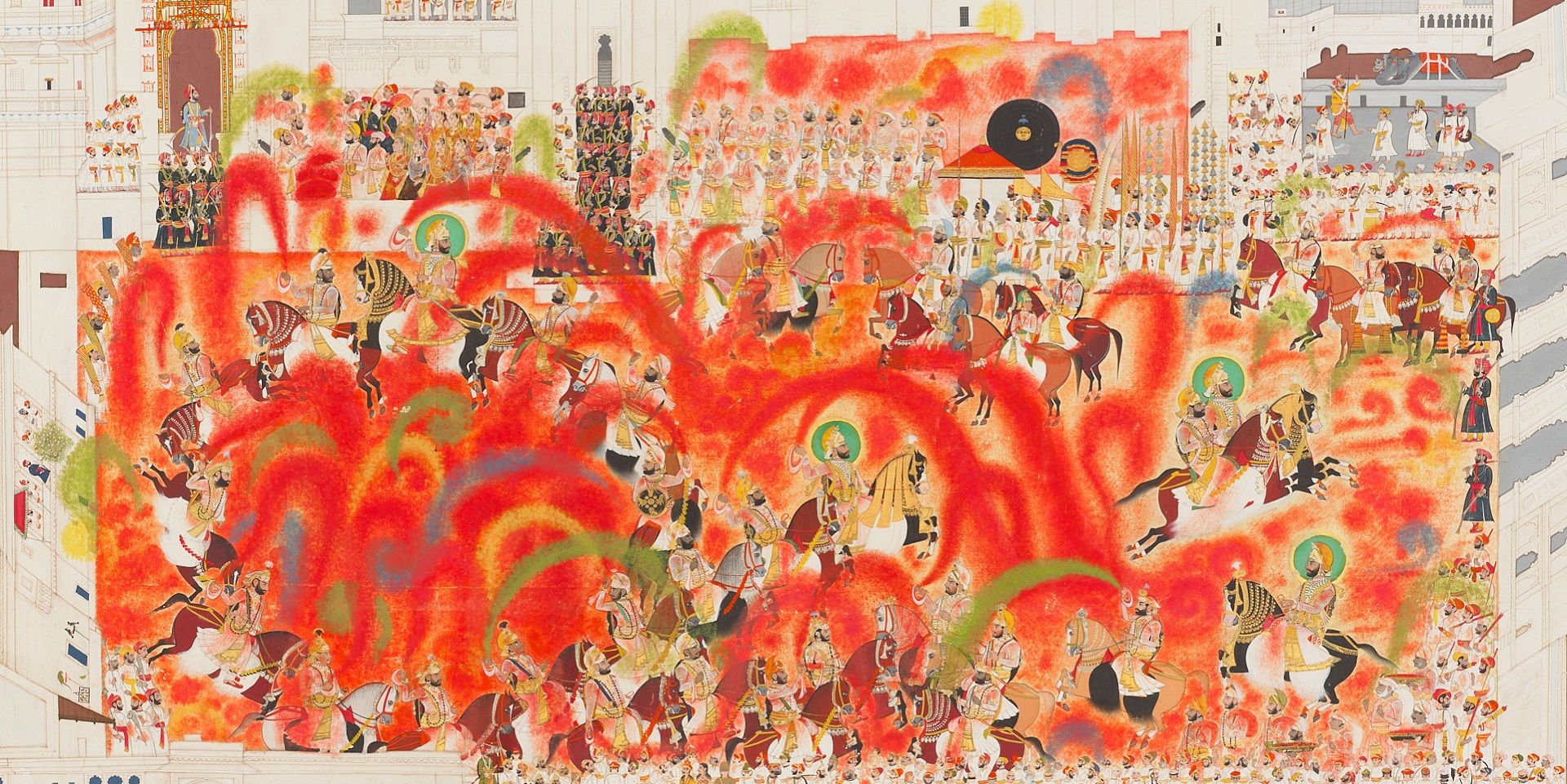
Conversations with Friends
Debra Diamond on Royal Udaipur painting at the Smithsonian
Ankan Kazi
June 01, 2023

Conversations with Friends
Imaging Water: A Conversation with the Smithsonian's Carol Huh
Ankan Kazi
July 01, 2023

Conversations with Friends
Debating secularism in South Asian Art with Tapati Guha-Thakurta
The Editorial Team
August 01, 2023

Conversations with Friends
Remembering Ambadas with art critic Prayag Shukla
Ankan Kazi
August 01, 2023
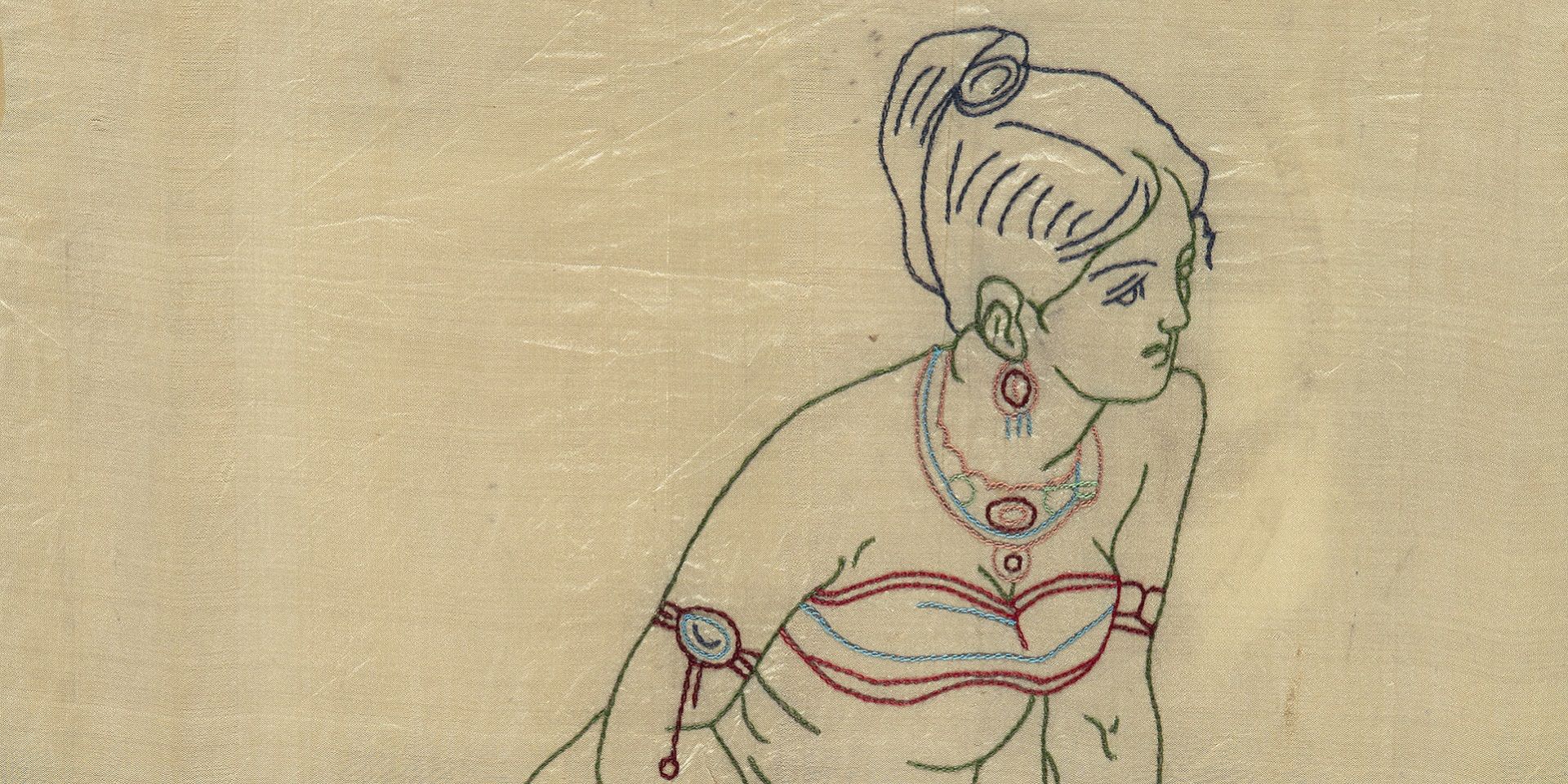
Conversations with Friends
Discovering the lives of Bengal's women artists with Soma Sen
Ayana Bhattacharya
September 01, 2023
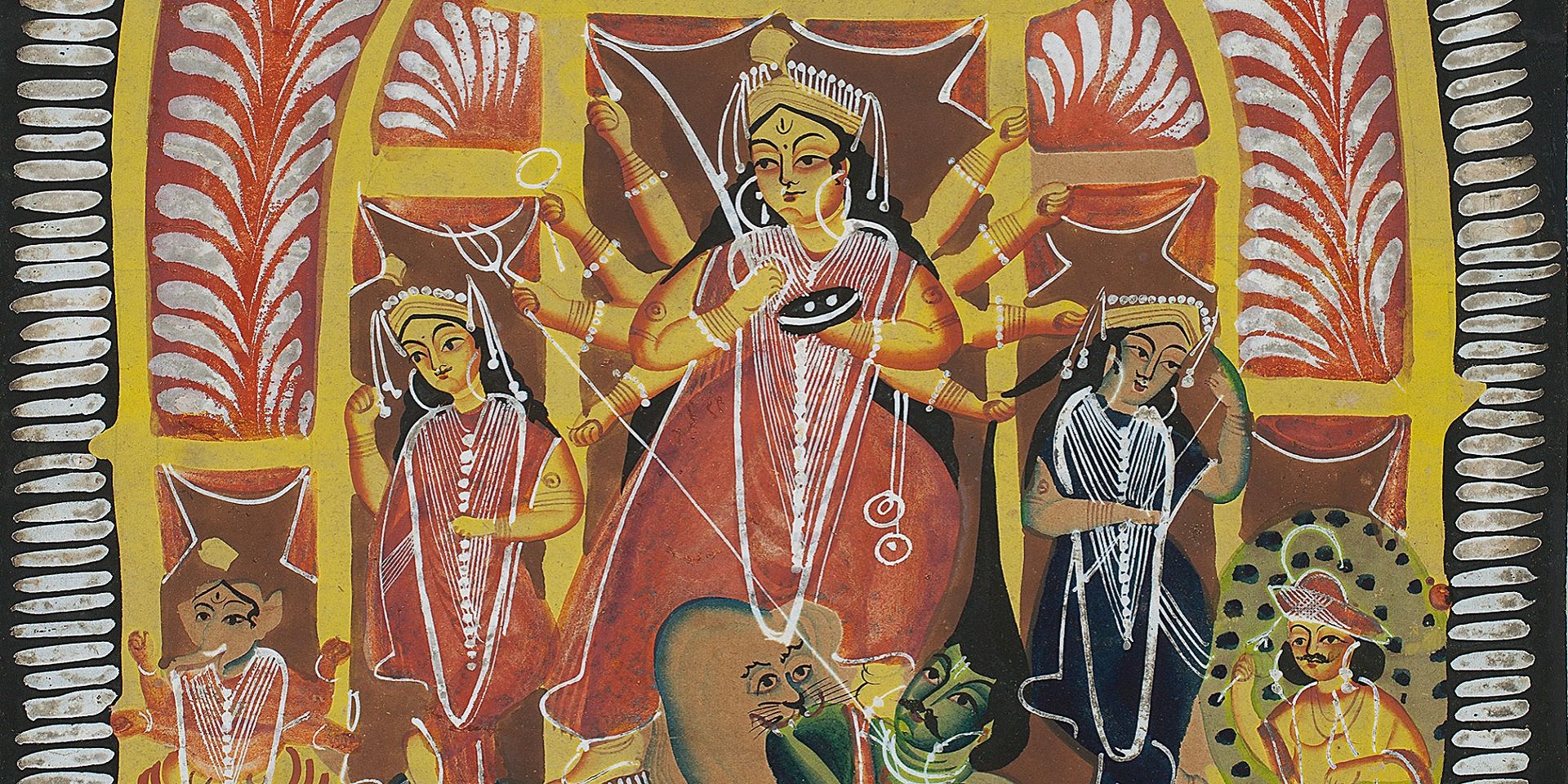
Conversations with Friends
Debating secularism in South Asian Art with Dr. Guha-Thakurta II
The Editorial Team
September 01, 2023

Conversations with Friends
Becoming New Delhi: A Conversation with Swapna Liddle
Ankan Kazi
October 01, 2023
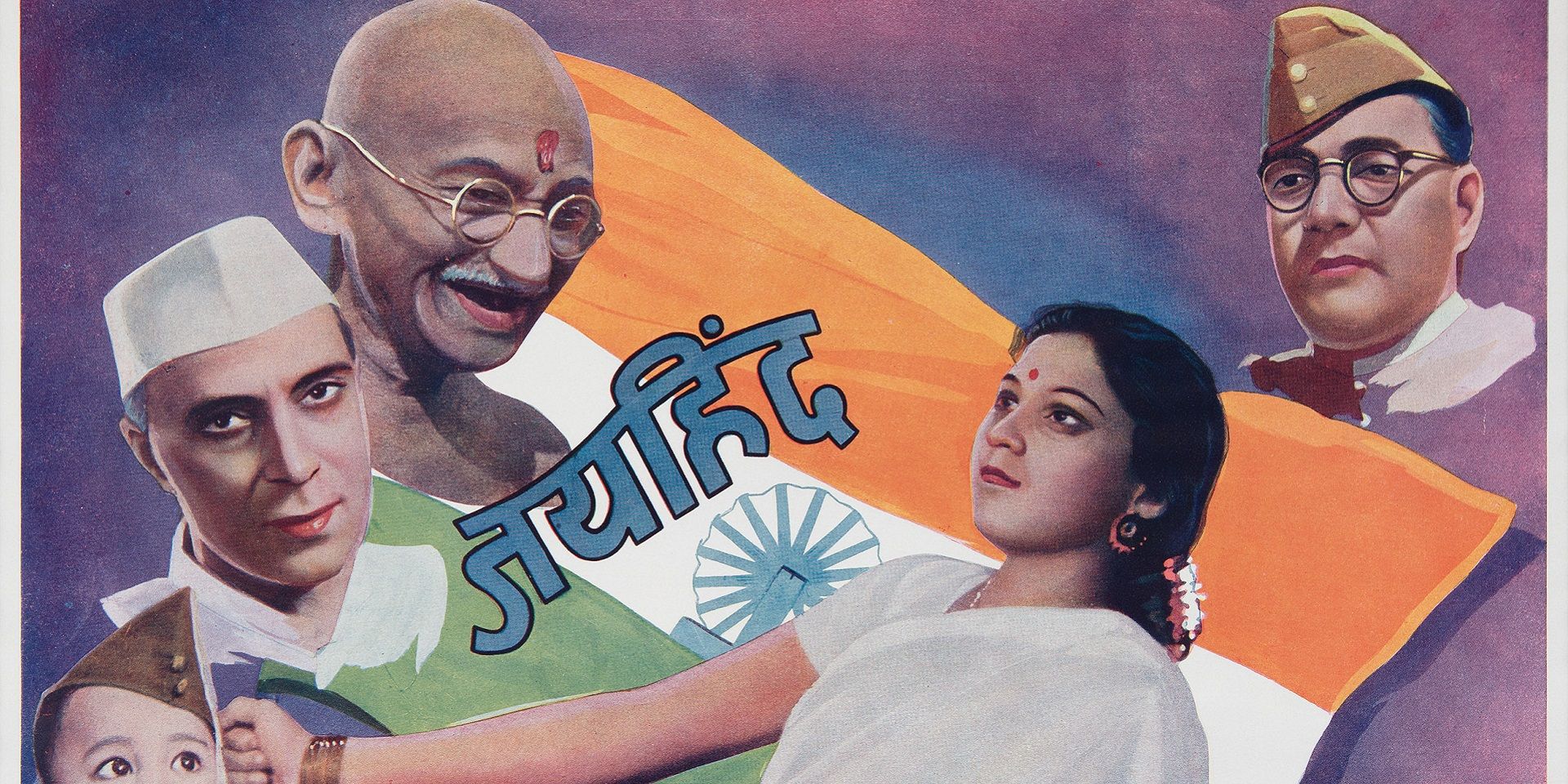
Conversations with Friends
Visualising the Freedom Struggle: A conversation with Vinay Lal
Ankan Kazi
November 01, 2023
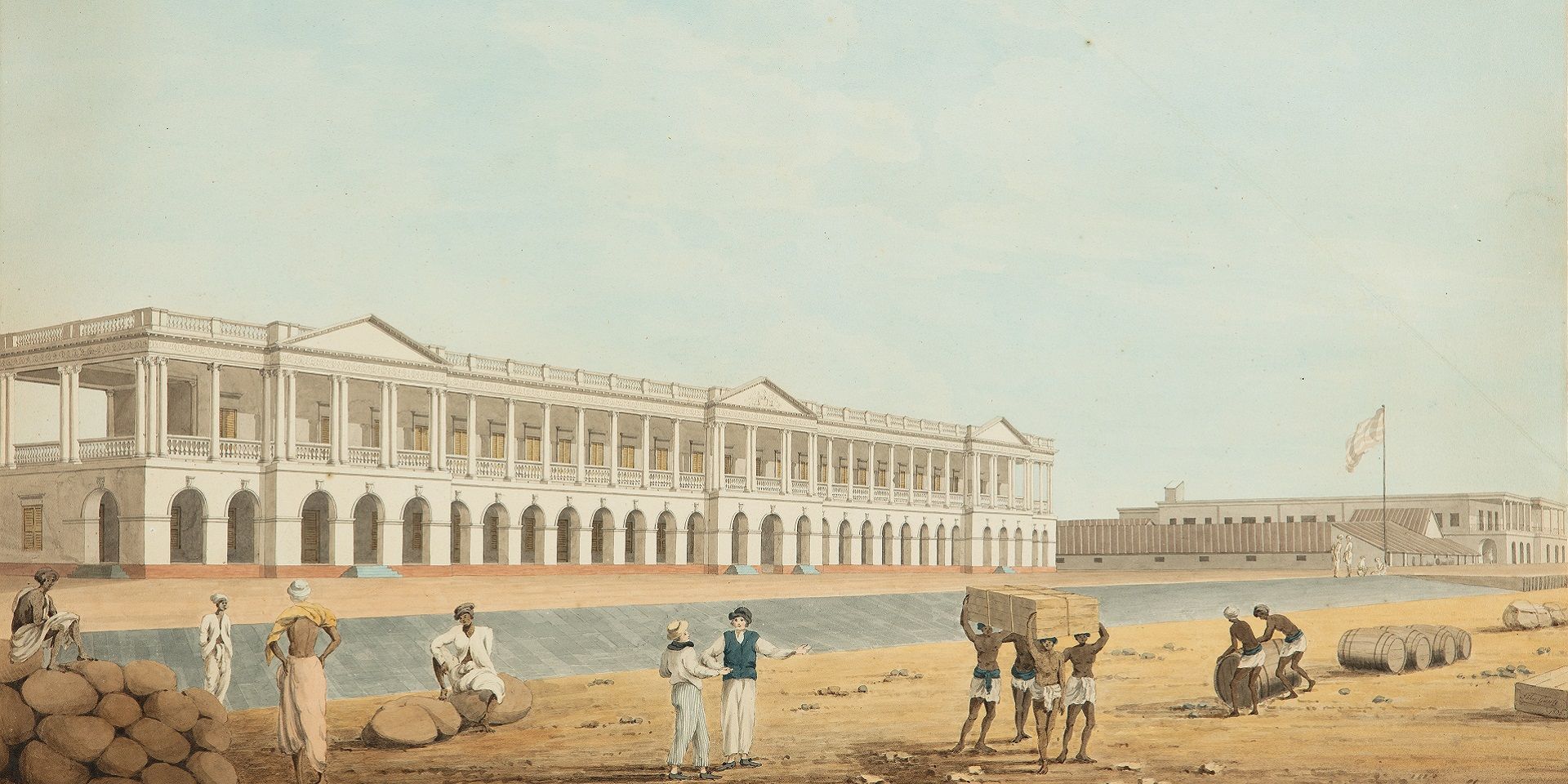
Conversations with Friends
Building an Empire: A Conversation with Rosie Llewellyn-Jones
Ankan Kazi and Giles Tillotson
December 01, 2023
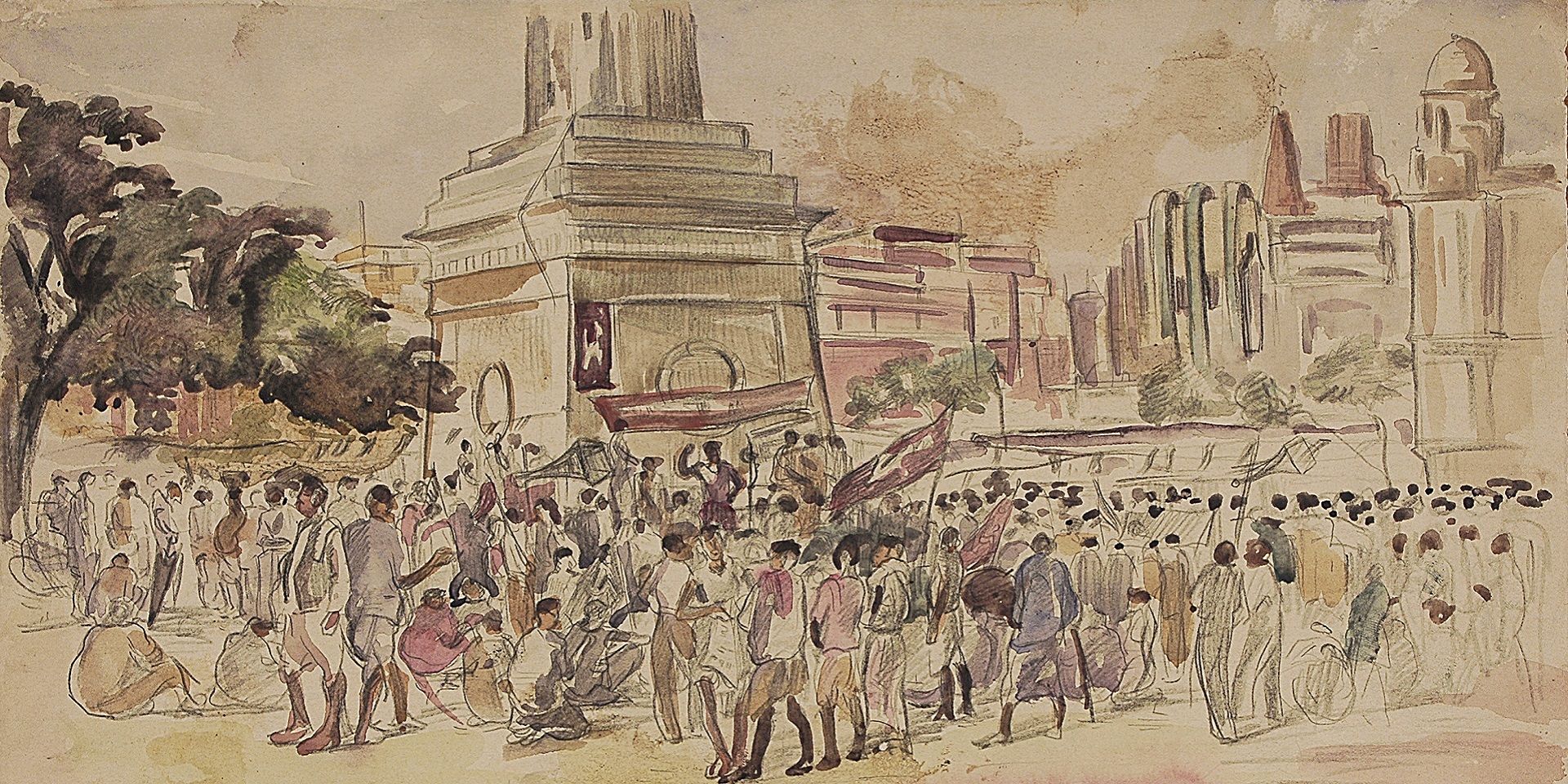
Conversations with Friends
Designing Calcutta: Navigating the city with architectural historian Swati Chattopadhyay
Shreeja Sen and Vinayak Bose
December 01, 2023
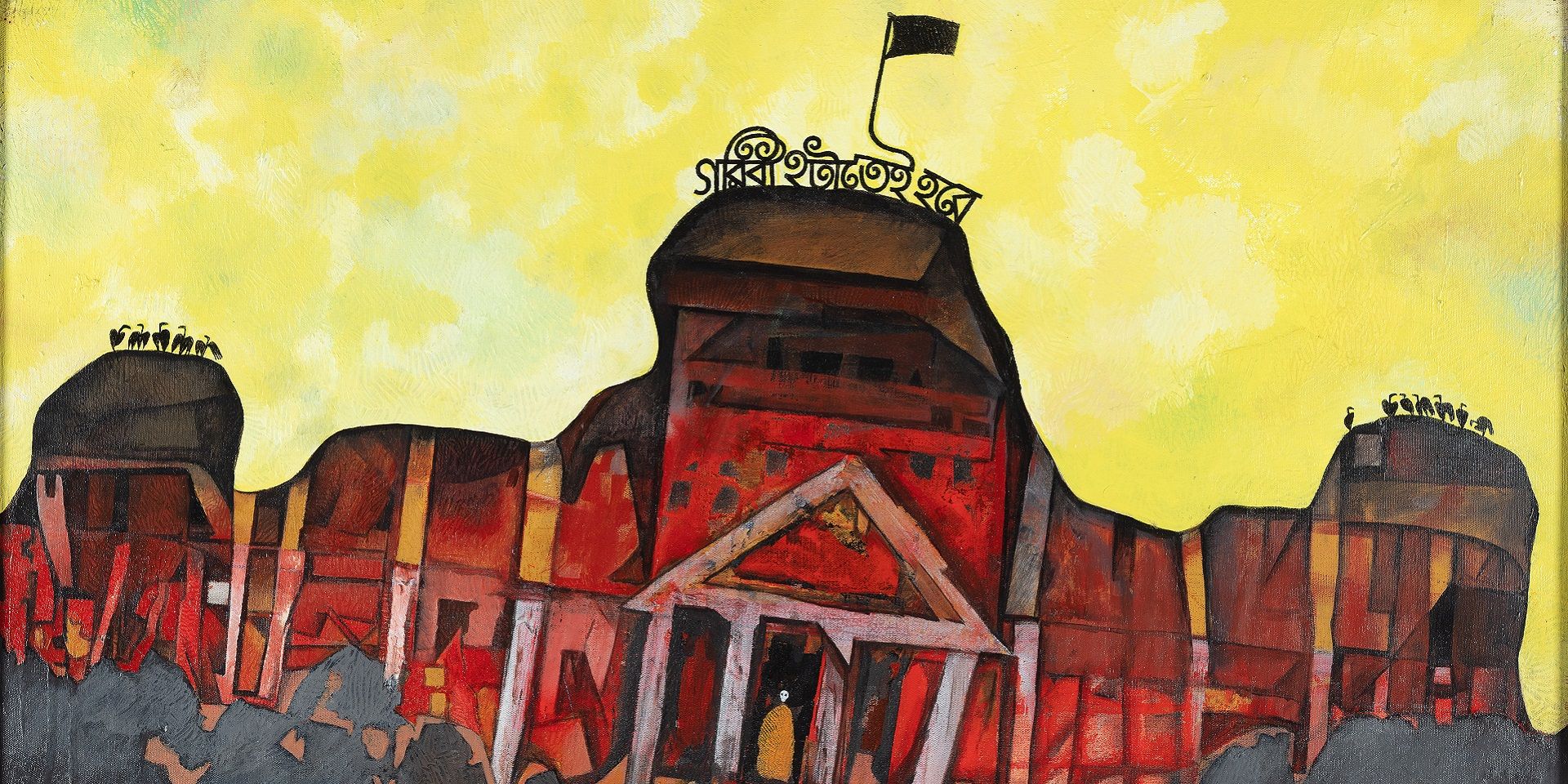
Conversations with Friends
Unarchiving the City: A Conversation with Swati Chattopadhyay
Shreeja Sen and Vinayak Bose
January 01, 2024
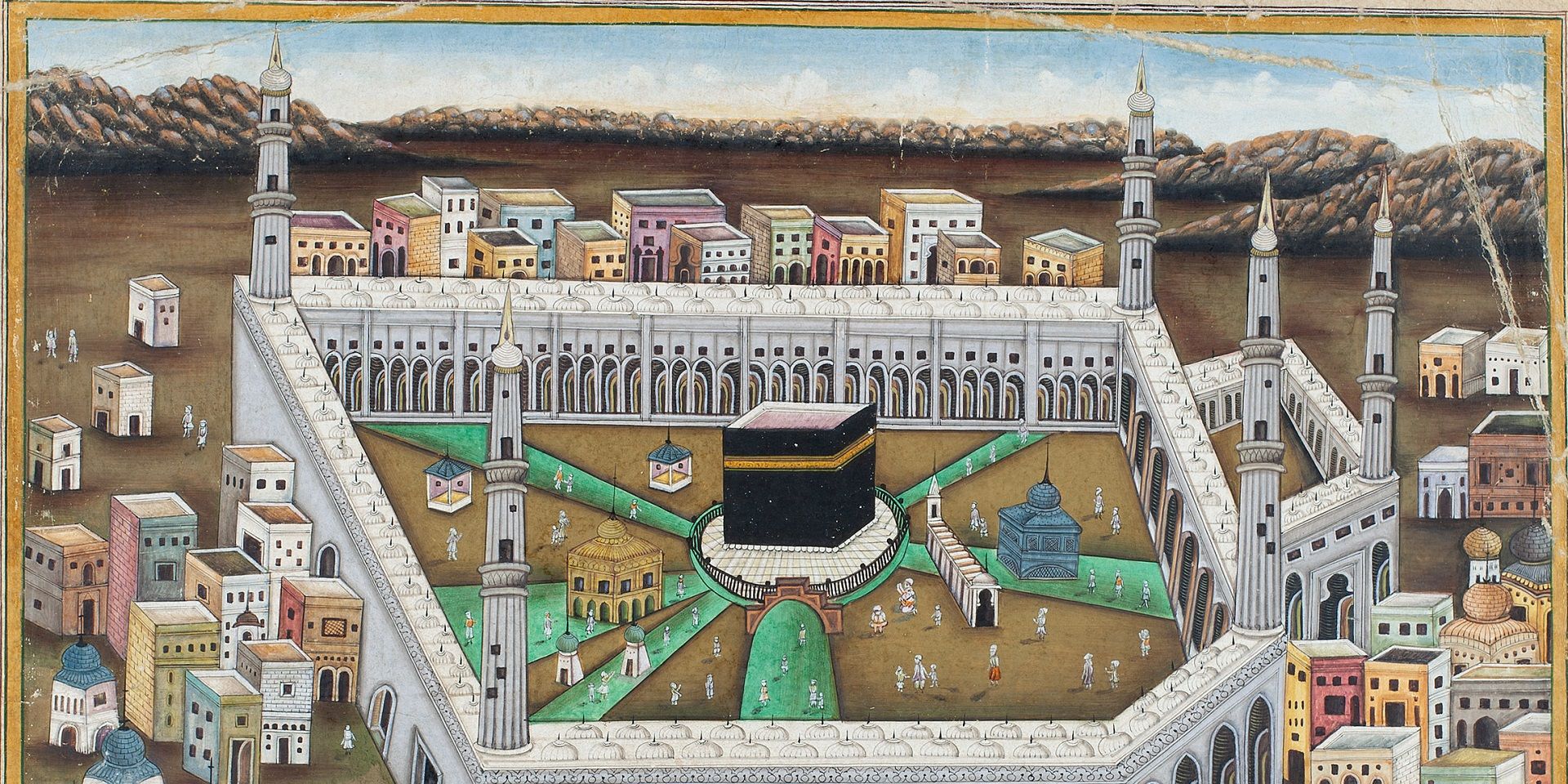
Conversations with Friends
Partition and Popular Art: A Conversation with Yousuf Saeed
Ankan Kazi
January 01, 2024

Conversations with Friends
Singing to Kali: A Conversation with Rachel F. McDermott
Ankan Kazi
February 01, 2024
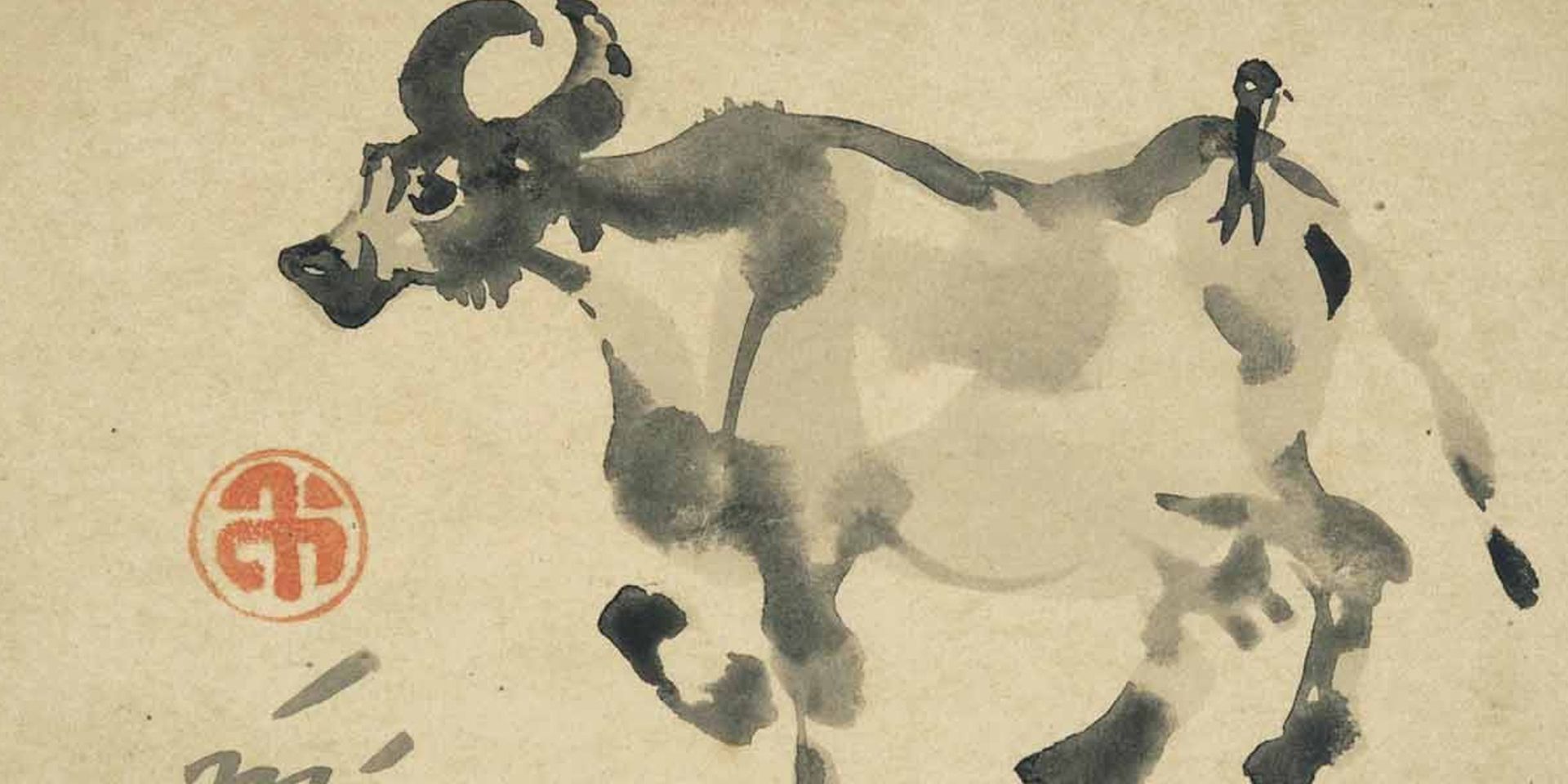
Conversations with Friends
The Asian Moment: A Conversation with Sugata Bose
Ankan Kazi
May 01, 2024
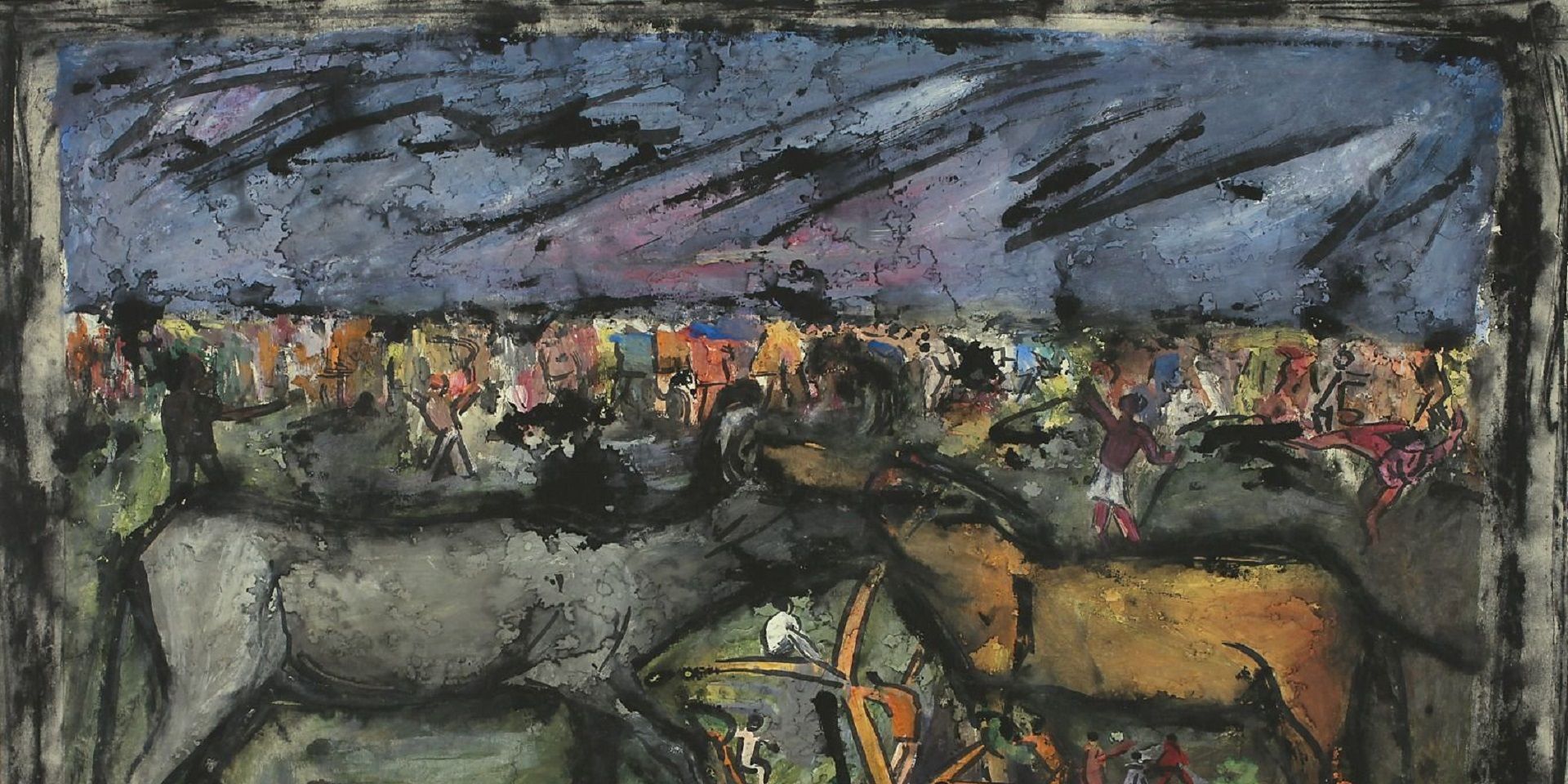
Conversations with Friends
Rudi von Leyden's Indian Art Adventures: With Reema Desai Gehi
Ankan Kazi
June 01, 2024

Conversations with Friends
Objects and the Museum: A Conversation with Sudeshna Guha
Ankan Kazi
July 01, 2024
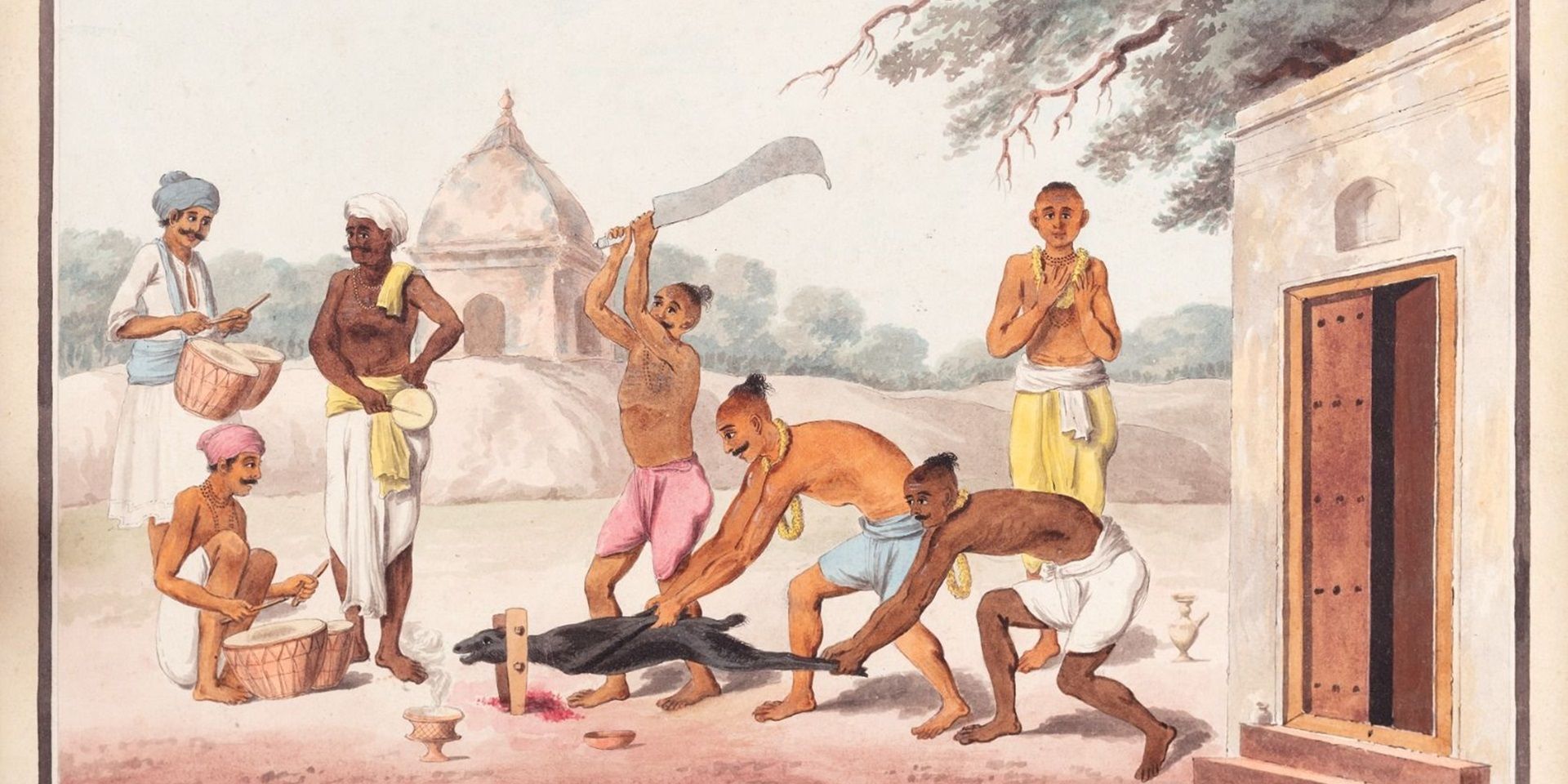
Conversations with Friends
Art of the Graft: A Conversation with Holly Shaffer
Ankan Kazi and Bhagyashri Dange
June 01, 2025

Conversations with Friends
Anita Vachharajani on Writing about Art for Children
Ankan Kazi
June 01, 2025







